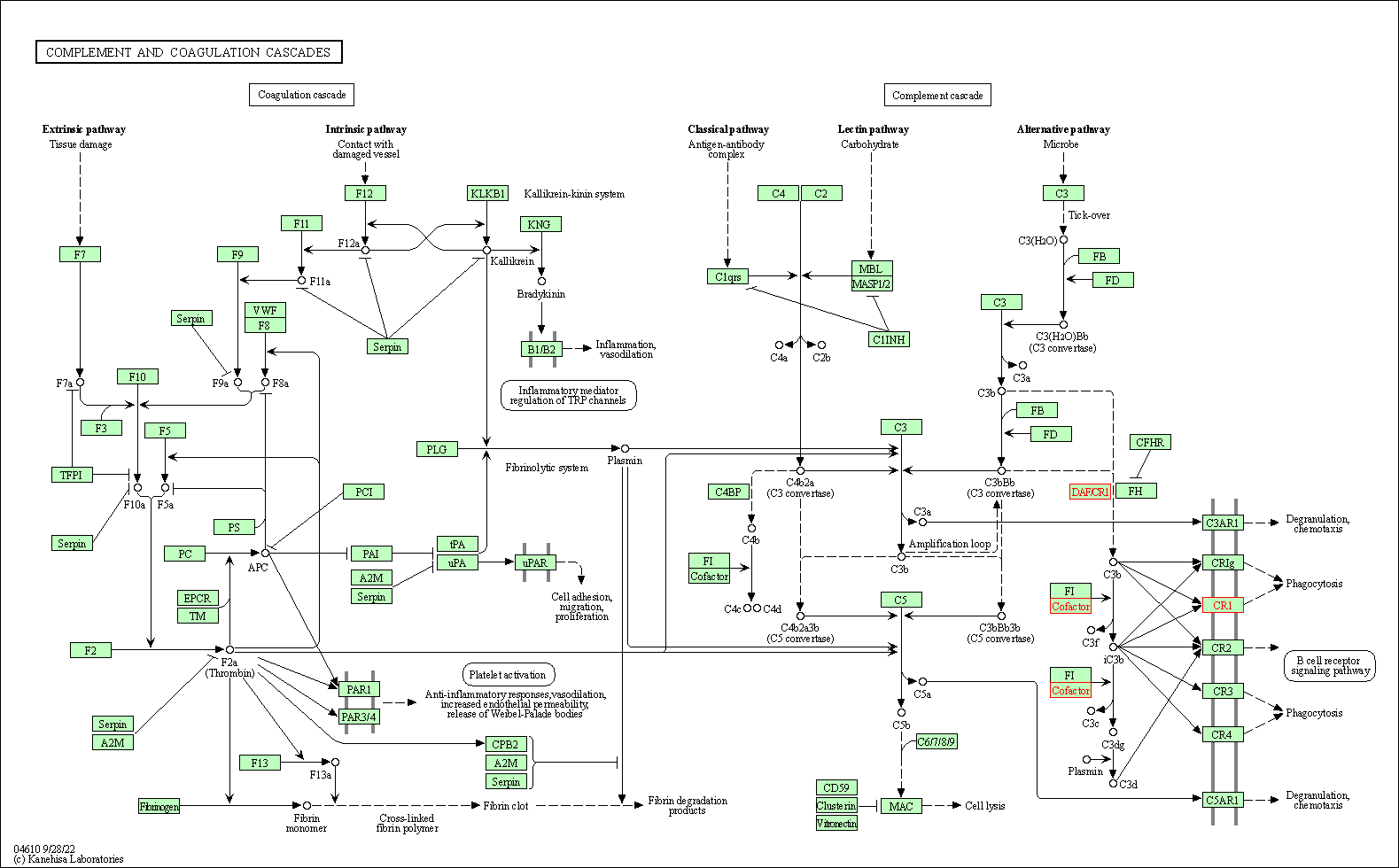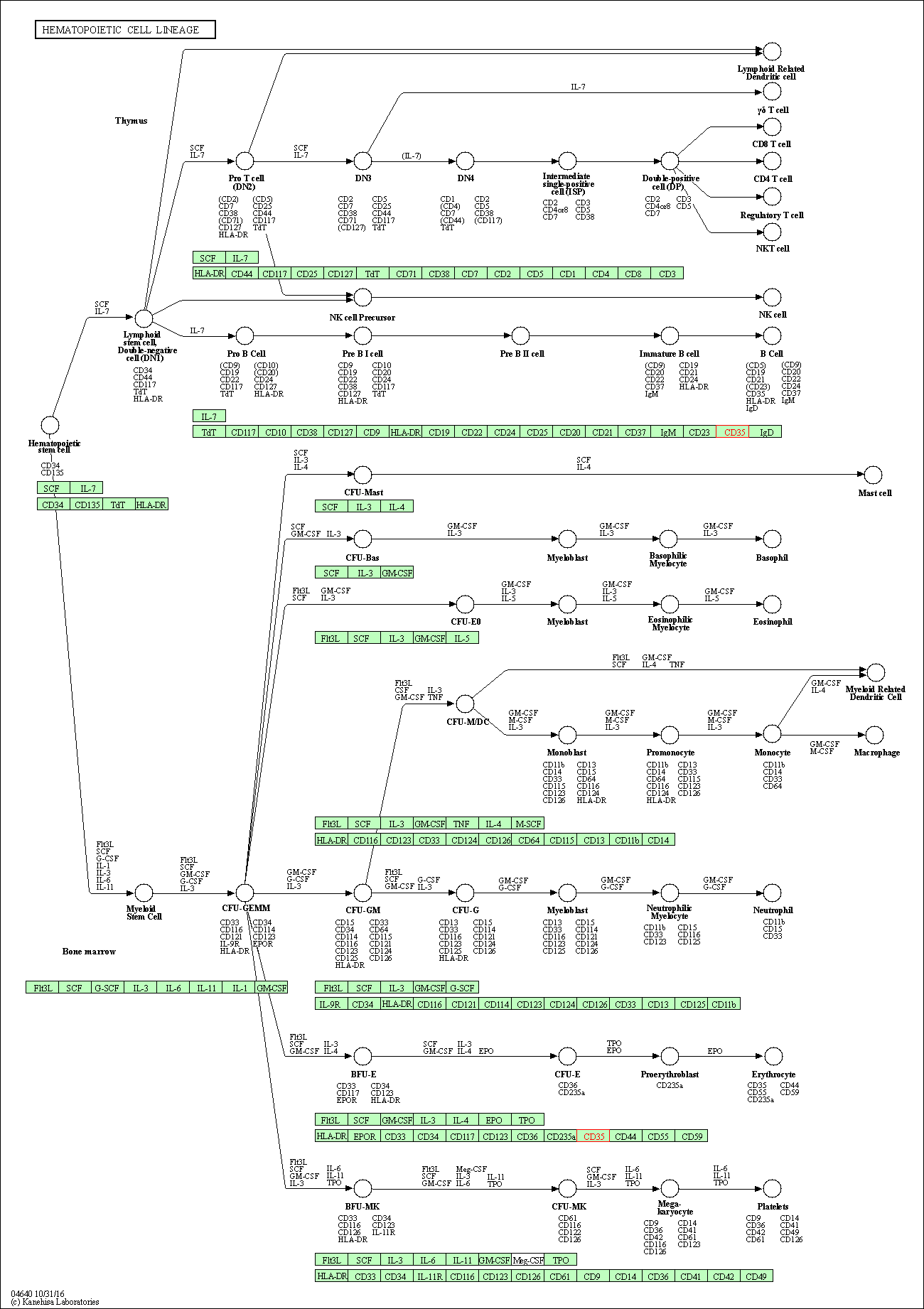Target Information
| Target General Information | Top | |||||
|---|---|---|---|---|---|---|
| Target ID |
T48457
(Former ID: TTDR00734)
|
|||||
| Target Name |
Complement receptor type 1 (CR1)
|
|||||
| Synonyms |
CR1; CD35 antigen; C3b/C4b receptor
Click to Show/Hide
|
|||||
| Gene Name |
CR1
|
|||||
| Target Type |
Clinical trial target
|
[1] | ||||
| Disease | [+] 1 Target-related Diseases | + | ||||
| 1 | Retinopathy [ICD-11: 9B71] | |||||
| Function |
Mediates cellular binding of particles and immunecomplexes that have activated complement.
Click to Show/Hide
|
|||||
| BioChemical Class |
Receptor of complement activation
|
|||||
| UniProt ID | ||||||
| Sequence |
MGASSPRSPEPVGPPAPGLPFCCGGSLLAVVVLLALPVAWGQCNAPEWLPFARPTNLTDE
FEFPIGTYLNYECRPGYSGRPFSIICLKNSVWTGAKDRCRRKSCRNPPDPVNGMVHVIKG IQFGSQIKYSCTKGYRLIGSSSATCIISGDTVIWDNETPICDRIPCGLPPTITNGDFIST NRENFHYGSVVTYRCNPGSGGRKVFELVGEPSIYCTSNDDQVGIWSGPAPQCIIPNKCTP PNVENGILVSDNRSLFSLNEVVEFRCQPGFVMKGPRRVKCQALNKWEPELPSCSRVCQPP PDVLHAERTQRDKDNFSPGQEVFYSCEPGYDLRGAASMRCTPQGDWSPAAPTCEVKSCDD FMGQLLNGRVLFPVNLQLGAKVDFVCDEGFQLKGSSASYCVLAGMESLWNSSVPVCEQIF CPSPPVIPNGRHTGKPLEVFPFGKTVNYTCDPHPDRGTSFDLIGESTIRCTSDPQGNGVW SSPAPRCGILGHCQAPDHFLFAKLKTQTNASDFPIGTSLKYECRPEYYGRPFSITCLDNL VWSSPKDVCKRKSCKTPPDPVNGMVHVITDIQVGSRINYSCTTGHRLIGHSSAECILSGN AAHWSTKPPICQRIPCGLPPTIANGDFISTNRENFHYGSVVTYRCNPGSGGRKVFELVGE PSIYCTSNDDQVGIWSGPAPQCIIPNKCTPPNVENGILVSDNRSLFSLNEVVEFRCQPGF VMKGPRRVKCQALNKWEPELPSCSRVCQPPPDVLHAERTQRDKDNFSPGQEVFYSCEPGY DLRGAASMRCTPQGDWSPAAPTCEVKSCDDFMGQLLNGRVLFPVNLQLGAKVDFVCDEGF QLKGSSASYCVLAGMESLWNSSVPVCEQIFCPSPPVIPNGRHTGKPLEVFPFGKAVNYTC DPHPDRGTSFDLIGESTIRCTSDPQGNGVWSSPAPRCGILGHCQAPDHFLFAKLKTQTNA SDFPIGTSLKYECRPEYYGRPFSITCLDNLVWSSPKDVCKRKSCKTPPDPVNGMVHVITD IQVGSRINYSCTTGHRLIGHSSAECILSGNTAHWSTKPPICQRIPCGLPPTIANGDFIST NRENFHYGSVVTYRCNLGSRGRKVFELVGEPSIYCTSNDDQVGIWSGPAPQCIIPNKCTP PNVENGILVSDNRSLFSLNEVVEFRCQPGFVMKGPRRVKCQALNKWEPELPSCSRVCQPP PEILHGEHTPSHQDNFSPGQEVFYSCEPGYDLRGAASLHCTPQGDWSPEAPRCAVKSCDD FLGQLPHGRVLFPLNLQLGAKVSFVCDEGFRLKGSSVSHCVLVGMRSLWNNSVPVCEHIF CPNPPAILNGRHTGTPSGDIPYGKEISYTCDPHPDRGMTFNLIGESTIRCTSDPHGNGVW SSPAPRCELSVRAGHCKTPEQFPFASPTIPINDFEFPVGTSLNYECRPGYFGKMFSISCL ENLVWSSVEDNCRRKSCGPPPEPFNGMVHINTDTQFGSTVNYSCNEGFRLIGSPSTTCLV SGNNVTWDKKAPICEIISCEPPPTISNGDFYSNNRTSFHNGTVVTYQCHTGPDGEQLFEL VGERSIYCTSKDDQVGVWSSPPPRCISTNKCTAPEVENAIRVPGNRSFFSLTEIIRFRCQ PGFVMVGSHTVQCQTNGRWGPKLPHCSRVCQPPPEILHGEHTLSHQDNFSPGQEVFYSCE PSYDLRGAASLHCTPQGDWSPEAPRCTVKSCDDFLGQLPHGRVLLPLNLQLGAKVSFVCD EGFRLKGRSASHCVLAGMKALWNSSVPVCEQIFCPNPPAILNGRHTGTPFGDIPYGKEIS YACDTHPDRGMTFNLIGESSIRCTSDPQGNGVWSSPAPRCELSVPAACPHPPKIQNGHYI GGHVSLYLPGMTISYICDPGYLLVGKGFIFCTDQGIWSQLDHYCKEVNCSFPLFMNGISK ELEMKKVYHYGDYVTLKCEDGYTLEGSPWSQCQADDRWDPPLAKCTSRTHDALIVGTLSG TIFFILLIIFLSWIILKHRKGNNAHENPKEVAIHLHSQGGSSVHPRTLQTNEENSRVLP Click to Show/Hide
|
|||||
| 3D Structure | Click to Show 3D Structure of This Target | PDB | ||||
| Drugs and Modes of Action | Top | |||||
|---|---|---|---|---|---|---|
| Clinical Trial Drug(s) | [+] 1 Clinical Trial Drugs | + | ||||
| 1 | CDX-1135 | Drug Info | Phase 1 | Macular degeneration | [2] | |
| Mode of Action | [+] 1 Modes of Action | + | ||||
| Modulator | [+] 1 Modulator drugs | + | ||||
| 1 | CDX-1135 | Drug Info | [1] | |||
| Cell-based Target Expression Variations | Top | |||||
|---|---|---|---|---|---|---|
| Cell-based Target Expression Variations | ||||||
| Different Human System Profiles of Target | Top |
|---|---|
|
Human Similarity Proteins
of target is determined by comparing the sequence similarity of all human proteins with the target based on BLAST. The similarity proteins for a target are defined as the proteins with E-value < 0.005 and outside the protein families of the target.
A target that has fewer human similarity proteins outside its family is commonly regarded to possess a greater capacity to avoid undesired interactions and thus increase the possibility of finding successful drugs
(Brief Bioinform, 21: 649-662, 2020).
Human Tissue Distribution
of target is determined from a proteomics study that quantified more than 12,000 genes across 32 normal human tissues. Tissue Specificity (TS) score was used to define the enrichment of target across tissues.
The distribution of targets among different tissues or organs need to be taken into consideration when assessing the target druggability, as it is generally accepted that the wider the target distribution, the greater the concern over potential adverse effects
(Nat Rev Drug Discov, 20: 64-81, 2021).
Human Pathway Affiliation
of target is determined by the life-essential pathways provided on KEGG database. The target-affiliated pathways were defined based on the following two criteria (a) the pathways of the studied target should be life-essential for both healthy individuals and patients, and (b) the studied target should occupy an upstream position in the pathways and therefore had the ability to regulate biological function.
Targets involved in a fewer pathways have greater likelihood to be successfully developed, while those associated with more human pathways increase the chance of undesirable interferences with other human processes
(Pharmacol Rev, 58: 259-279, 2006).
Human Similarity Proteins
Human Tissue Distribution
Human Pathway Affiliation
|
|
|
There is no similarity protein (E value < 0.005) for this target
|
|
Note:
If a protein has TS (tissue specficity) scores at least in one tissue >= 2.5, this protein is called tissue-enriched (including tissue-enriched-but-not-specific and tissue-specific). In the plots, the vertical lines are at thresholds 2.5 and 4.
|
| KEGG Pathway | Pathway ID | Affiliated Target | Pathway Map |
|---|---|---|---|
| Complement and coagulation cascades | hsa04610 | Affiliated Target |

|
| Class: Organismal Systems => Immune system | Pathway Hierarchy | ||
| Neutrophil extracellular trap formation | hsa04613 | Affiliated Target |

|
| Class: Organismal Systems => Immune system | Pathway Hierarchy | ||
| Hematopoietic cell lineage | hsa04640 | Affiliated Target |

|
| Class: Organismal Systems => Immune system | Pathway Hierarchy | ||
| Target Affiliated Biological Pathways | Top | |||||
|---|---|---|---|---|---|---|
| KEGG Pathway | [+] 6 KEGG Pathways | + | ||||
| 1 | Complement and coagulation cascades | |||||
| 2 | Hematopoietic cell lineage | |||||
| 3 | Legionellosis | |||||
| 4 | Leishmaniasis | |||||
| 5 | Malaria | |||||
| 6 | Tuberculosis | |||||
| Reactome | [+] 1 Reactome Pathways | + | ||||
| 1 | Regulation of Complement cascade | |||||
| WikiPathways | [+] 4 WikiPathways | + | ||||
| 1 | Complement and Coagulation Cascades | |||||
| 2 | Human Complement System | |||||
| 3 | Primary Focal Segmental Glomerulosclerosis FSGS | |||||
| 4 | Complement cascade | |||||
| References | Top | |||||
|---|---|---|---|---|---|---|
| REF 1 | Complement activation is critical for placental ischemia-induced hypertension in the rat. Mol Immunol. 2013 Nov;56(1-2):91-7. | |||||
| REF 2 | ClinicalTrials.gov (NCT01791686) Clinical Trial of CDX-1135 in Pediatric and Adult Patients With Dense Deposit Disease. U.S. National Institutes of Health. | |||||
If You Find Any Error in Data or Bug in Web Service, Please Kindly Report It to Dr. Zhou and Dr. Zhang.

